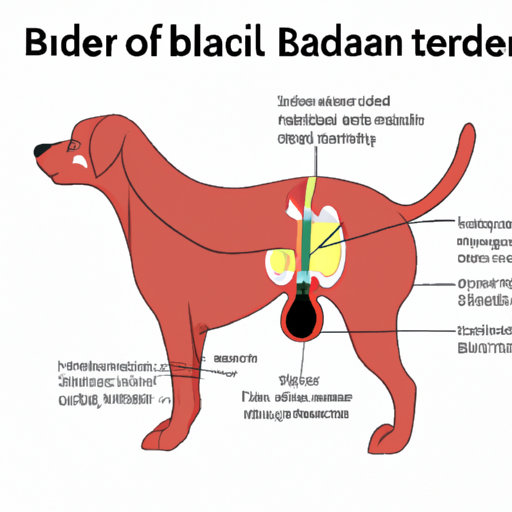As caregivers to our four-legged companions, knowing the basic anatomy of our dogs is incredibly important. Among the various parts of a dog’s anatomy, the bladder holds a significant place. Why? Because it’s the organ responsible for the storage and expulsion of urine, a key part of your dog’s excretory system. But exactly where is a dog’s bladder located? Let’s dive in and explore this topic in depth.
Table of Contents
- Understanding a Dog’s Anatomy
- The Location and Function of a Dog’s Bladder
- Common Bladder Problems in Dogs
- How to Keep Your Dog’s Bladder Healthy
- Frequently Asked Questions
Key Takeaways
- A dog’s bladder is located in the lower abdomen, near the rear end of the rib cage.
- The bladder serves as the reservoir for urine until it’s expelled from the body.
- Common bladder problems in dogs include urinary tract infections and bladder stones.
- Regular vet check-ups and a healthy diet can help maintain bladder health.
Understanding a Dog’s Anatomy
Before we can pinpoint the location of a dog’s bladder, it’s helpful to have a general understanding of a dog’s anatomy. Like humans, dogs have a complex internal system made up of numerous organs, each playing a crucial role in maintaining overall health.
Here’s a simplified overview:
- The Digestive System: Comprises the mouth, esophagus, stomach, and intestines.
- The Respiratory System: Consists of the nose, trachea, and lungs.
- The Circulatory System: Includes the heart and blood vessels.
- The Excretory System: Comprises the kidneys, ureters, bladder, and urethra.
Each of these systems, including the excretory system (where the bladder is located), work together to keep your furry friend healthy and active.
The Location and Function of a Dog’s Bladder
The bladder of a dog is located in the lower abdomen, tucked near the rear end of the rib cage. It’s a small, balloon-like organ that serves as the reservoir for urine. The kidneys filter waste from the blood and convert it into urine, which then travels down the ureters into the bladder. When your dog urinates, the urine is expelled from the bladder through the urethra and out of the body.
Regular urination is a good sign, indicating that your pet’s bladder is functioning properly. It’s important to watch for any changes in your dog’s urination habits, as this could be a sign of bladder problems. You can find more information about this on onetopdog.
Common Bladder Problems in Dogs
Just like humans, dogs can experience a variety of bladder problems. The most common are urinary tract infections (UTIs) and bladder stones.
Urinary Tract Infections (UTIs): These occur when bacteria invade and multiply in the urinary tract, causing inflammation and discomfort. Symptoms include frequent urination, blood in the urine, and signs of pain while urinating. If left untreated, UTIs can lead to serious complications, including kidney damage.
Bladder Stones: These are hard deposits of minerals that form in the bladder. They can cause similar symptoms to UTIs and can be very painful for your pet. For more details on bladder stones, check out this article.
How to Keep Your Dog’s Bladder Healthy
Maintaining your dog’s bladder health is essential. Regular vet check-ups, a balanced diet, and plenty of fresh water can help keep your pet’s bladder in good shape. Also, make sure your dog has plenty of opportunities to urinate throughout the day to prevent the bladder from becoming too full.
For more tips on how to keep your dog healthy, click here.
Frequently Asked Questions
1. Where is a dog’s bladder located?
The bladder is located in the lower abdomen, near the rear end of the rib cage.
2. What are the symptoms of bladder problems in dogs?
Symptoms can include frequent urination, blood in the urine, and signs of pain while urinating.
3. How can I keep my dog’s bladder healthy?
Regular vet check-ups, a balanced diet, plenty of fresh water, and regular bathroom breaks can all contribute to a healthy bladder.
Understanding your dog’s anatomy, including the location and function of the bladder, is an important part of responsible pet ownership. Armed with this knowledge, you can better monitor your dog’s health and take action if you notice any changes. Remember, a healthy dog is a happy dog!
For more information on dog’s health and anatomy, consider visiting PetMD or American Kennel Club.



